USDA hardiness zone 6 spans the entire nation, touching tiny parts of Massachusetts and Arizona alike. If you want to get a good sense of the Zone 6 climate, think about Kansas, Ohio, or North Texas. These areas are almost entirely made up of Zone 6 weather patterns.
If you’ve decided to add some perennials to your garden in this hardiness zone, it can be a challenge to pick the perfect plants. Located squarely in the middle of the 13 hardiness zones within the United States, the Zone 6 climate is amazingly versatile.
The good news is that many exciting perennials will thrive in Zone 6, which touches a part of more than 30 states in America and the District of Columbia. Ready to learn which ones work best for this region? Let’s jump in and take a look!
Abelia
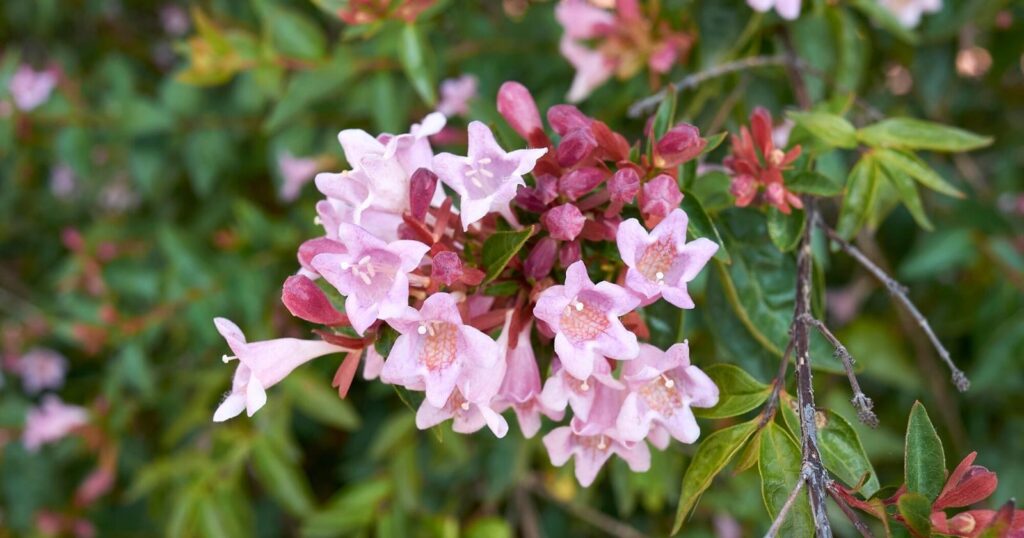
Scientific Name: Linnaea × grandiflora
- Plant Type: Perennial
- Geographic Origin: Pacific Northwestern, Eastern, Midwest
- Plant Size: 3-6 feet tall
- Sun Exposure: Part sun to full sun
- Plant Zone: 6
These small, rounded evergreen shrubs are recognized by abundant light pink or white flowers, attracting passing pollinators. That is what the name “abelia” means: abundant flowers! The abelia flower communicates deep symbolism in Mexico as an icon of equality.
The abelia flowers bloom in summer and into the fall in Zone 6 locations like Oregon. Oregon State University offers an extensive landscape plants resource website for detailed information on Zone 6 perennials like the abelia.
Allium
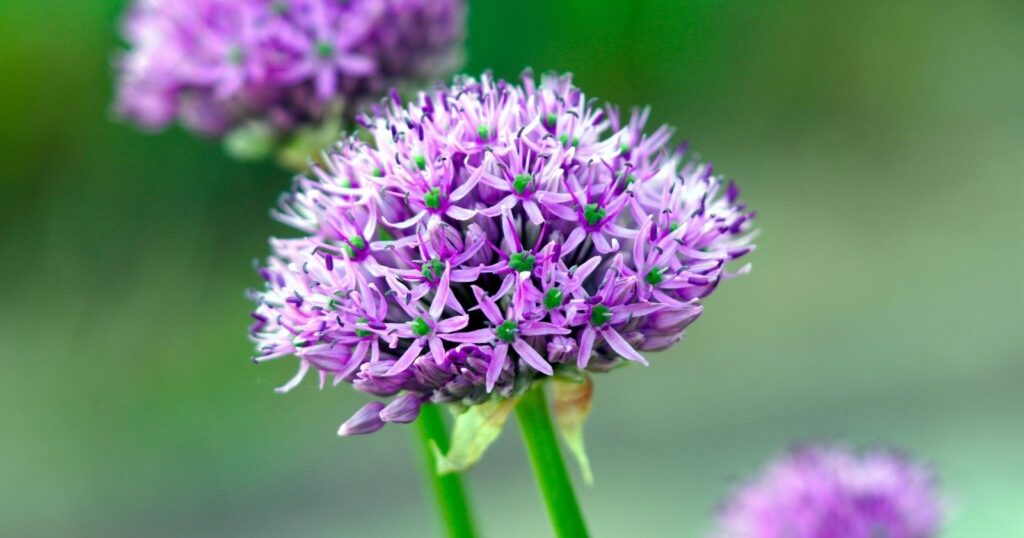
Scientific Name: Allium
- Plant Type: Perennial
- Geographic Origin: Pacific Northwestern, Eastern, Midwest
- Plant Size: 6 -12 inches
- Sun Exposure: Part sun to full sun
- Plant Zone: 6
Have you ever considered ornamental onions? Wait! Hear us out! These are some of the easiest Zone 6 perennials, reliably delivering attractive greenery and appealing blossoms year after year.
This unexpected plant provides an exciting contrast throughout your gardens. Quickly sprouting patches of spiky, grasslike leaves will proliferate throughout the planting. Try an allium variety in various conditions, from moist soil to well-drained and sunny or shaded areas.
Clip the leaves as chives in your cooking or let the ornamental blossoms develop at the end.
Azalea
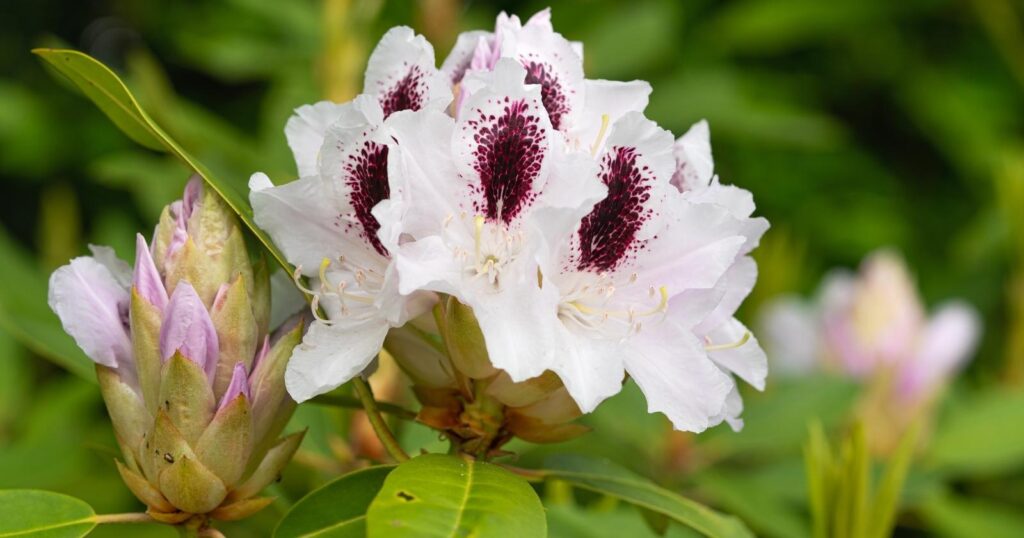
Scientific Name: Rhododendron
- Plant Type: Perennial
- Geographic Origin: Pacific Northwestern, Eastern, Midwest
- Plant Size: up to 20 feet tall
- Sun Exposure: Part sun
- Plant Zone: 6
Azaleas are another easy-to-grow shrub that thrives as a Zone 6 perennial.
Conifers will also support azalea growth as they both appreciate acidic, well-drained soils and wood chip mulch for basic maintenance. Azaleas should be planted in a cool area with part shade and only planted during the spring season. This plant also thrives in containers!
Azalea plants are also known as the rhododendron. You may recognize it by either name or its flowers, which look like delicate, five-petaled flowers that open like heads of lettuce. These flowers are white, pink, red, fuchsia, or lavender.
Bee Balm
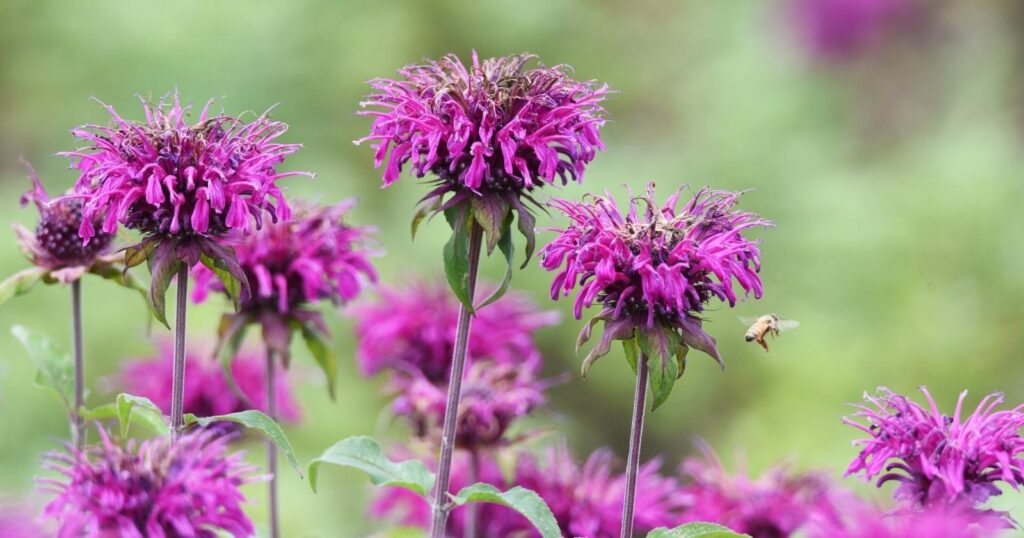
Scientific Name: Monarda
- Plant Type: Perennial
- Geographic Origin: Pacific Northwestern, Eastern, Midwest
- Plant Size: 2-4 feet tall
- Sun Exposure: Part sun to full sun
- Plant Zone: 6
Bee balm, or monarda, is an excellent choice for any gardener looking to add some Zone 6 perennials to their landscape. This plant overflows with benefits, and it’s not just its pollinator status. This North American native plant is beloved by bees, butterflies, and hummingbirds.
This Zone 6 perennial continues to benefit your entire garden ecosystem by serving as a companion plant. Companion planting is the practice of planting certain species of herbs, vegetables, flowers, or other plants together so they can help each other thrive.
Bee balm is also known as bergamot and provides a fragrant herb that enhances Earl Grey tea and other teatime pleasures.
This popular perennial delivers a shaggy, magenta, purple, or white flower at the top that resembles a sea urchin. Bee balm can grow two to four feet tall.
Blanket Flower
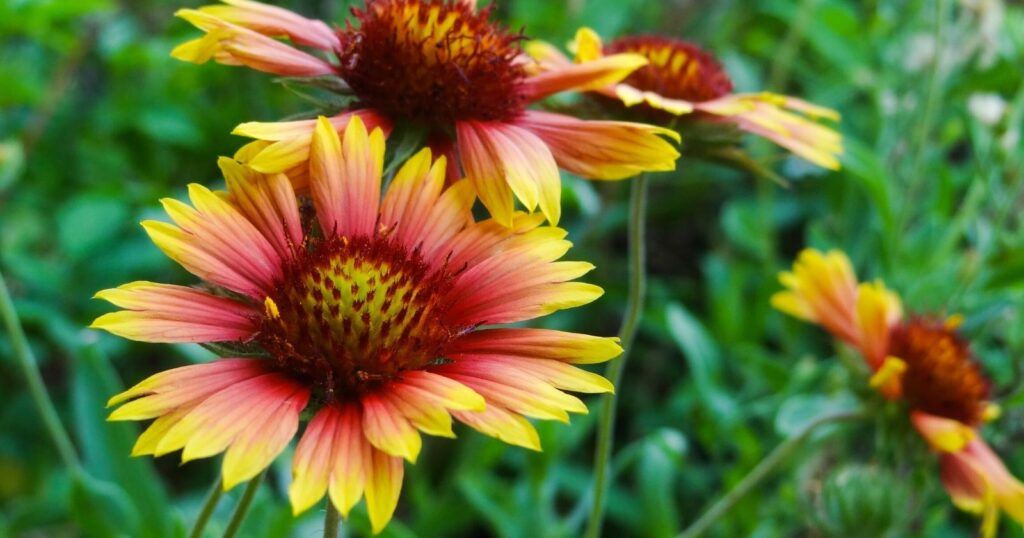
Scientific Name: Gaillardia
- Plant Type: Perennial
- Geographic Origin: Pacific Northwestern, Eastern, Midwest
- Plant Size: 1 foot tall
- Sun Exposure: Part sun to full sun
- Plant Zone: 6
This flower is another easy-to-grow Zone 6 perennial, boasting vibrant flowers that look like daisies. As the name suggests, the blanket flower has a spreading habit of about 20 inches. This ornamental plant will bloom widely the first year if you purchase it as a plant from the nursery.
Blanket flower delivers large, head-turning blossoms in yellow and red during Zone 6’s hot summer days. Blanket flower is slightly toxic to humans, so make sure this plant is located away from children or others who may be quickly drawn to its beauty.
Like Veronica, another Zone 6 perennial on this list native to North America, the blanket flower needs little to no attention to grow successfully. This flower can make it through inhospitable climates and will return year after year. Choose blanket flower for a natural garden.
Boxwood
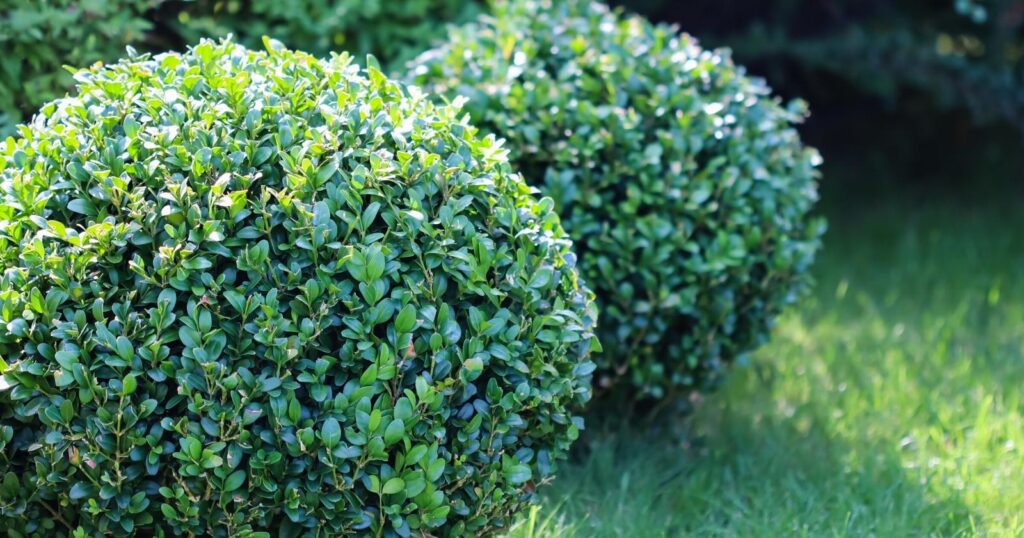
Scientific Name: Buxus sempervirens
- Plant Type: Perennial
- Geographic Origin: Pacific Northwestern, Eastern, Midwest
- Plant Size: 3-6 feet tall
- Sun Exposure: Part sun to full sun
- Plant Zone: 6
When you think of a polished, upright hedge that exactly lines the perimeter of someone’s yard, you are probably thinking of a boxwood. This dense shrub is often pruned into precise shapes, from strict rectangles to more whimsical topiaries.
This shrub likes well-drained soil or even living in a container. Boxwood can thrive in full or part sun environments and does not flower.
If you choose a boxwood shrub, we recommend familiarizing yourself with pruning. Research the best times of year to prune your hedge. This truly does matter in places like Kentucky, a Zone 6 location. Purchase a lopper or electric hedge trimmer to help you with this yard task.
Boxwood is hardy to Zone 6 and provides a great diversity to your landscape. Nothing grows or looks quite like the iconic boxwood! Mix a boxwood hedge with more free-form plantings for a nice visual balance.
Butterfly Bush
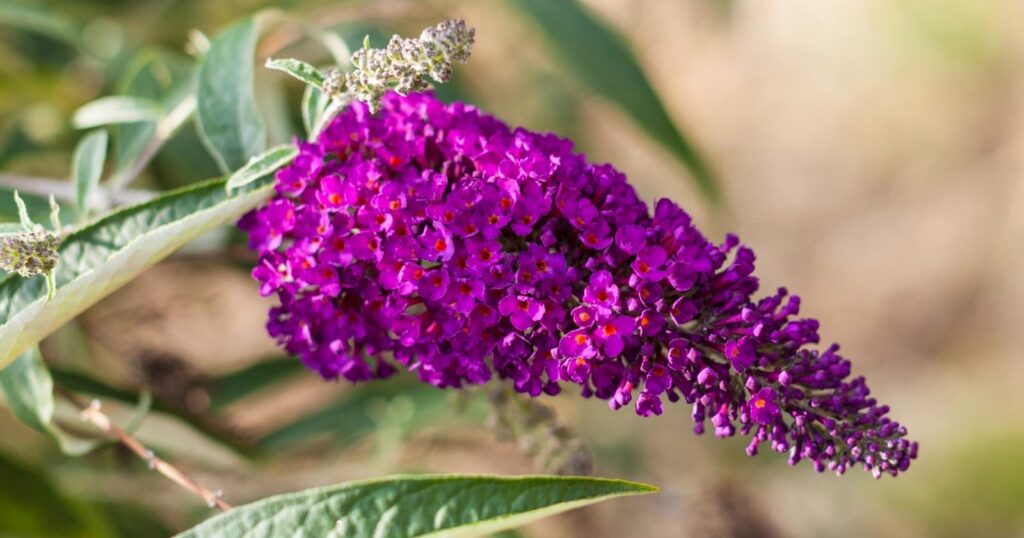
Scientific Name: Buddleja
- Plant Type: Perennial
- Geographic Origin: Pacific Northwestern, Eastern, Midwest
- Plant Size: 1-2 feet tall
- Sun Exposure: Part sun to full sun
- Plant Zone: 6
While the long cones of flowers are the signature feature of the butterfly bush, this plant will promote year-round interest in your Zone 6 perennial garden. The whimsical growing habit of this plant and its attractive evergreen leaves make a butterfly bush an exceptional choice.
A blooming butterfly bush is truly a sight to behold. This bush can become weighed down with its impressive, triangular blooms of tightly packed flowers. These blossoms are commonly purple but can also be magenta, burgundy, or orange.
The butterfly bush enjoys similar growing conditions to its Zone 6 cousin, the boxwood. Well-drained soil in either sun or shade works for this bush. However, butterfly bushes can be considered invasive. Be sure to check in with your local county extension office to learn more.
Carex
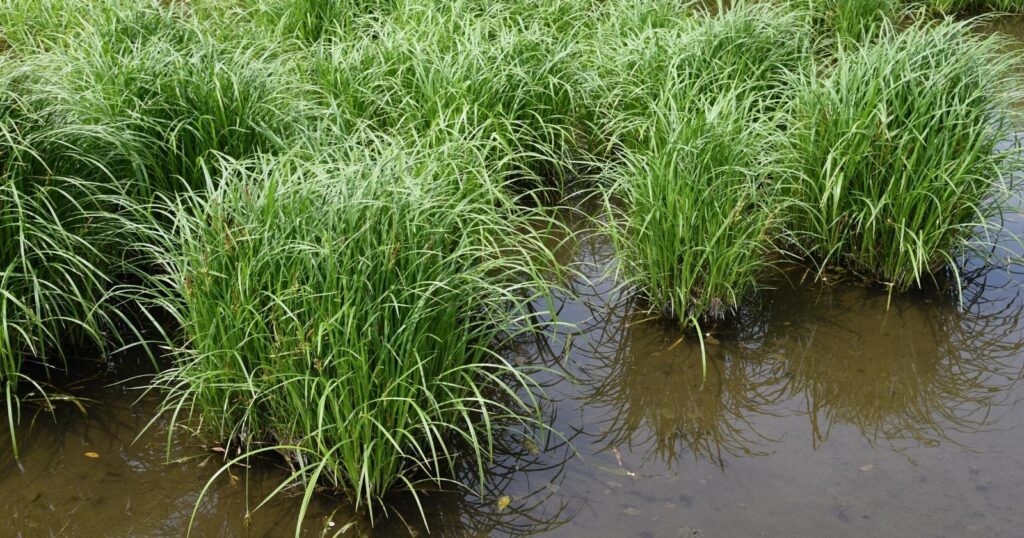
Scientific Name: Carex
- Plant Type: Perennial
- Geographic Origin: Pacific Northwestern, Eastern, Midwest
- Plant Size: 12 – 18 inches
- Sun Exposure: Part sun
- Plant Zone: 6
Carex is an ornamental grass perennial that comes in many different varieties. Everillo carex is a bright chartreuse-colored plant that throws off slender, spiky leaves. This dwarf plant grows to only about a foot tall and 18 inches wide and is resistant to pests like deer.
This grass grows in a fountain-like habit, with a spout of leaves coming from a central point. Carex plants can grow curled leaves or leaves with a razor-sharp edge. These plants are often naturally found in very wet areas, like bogs, swamps, riverbanks, and even the arctic.
This Zone 6 perennial thrives in shady areas, preferring days of part sun exposure only.
Coneflower
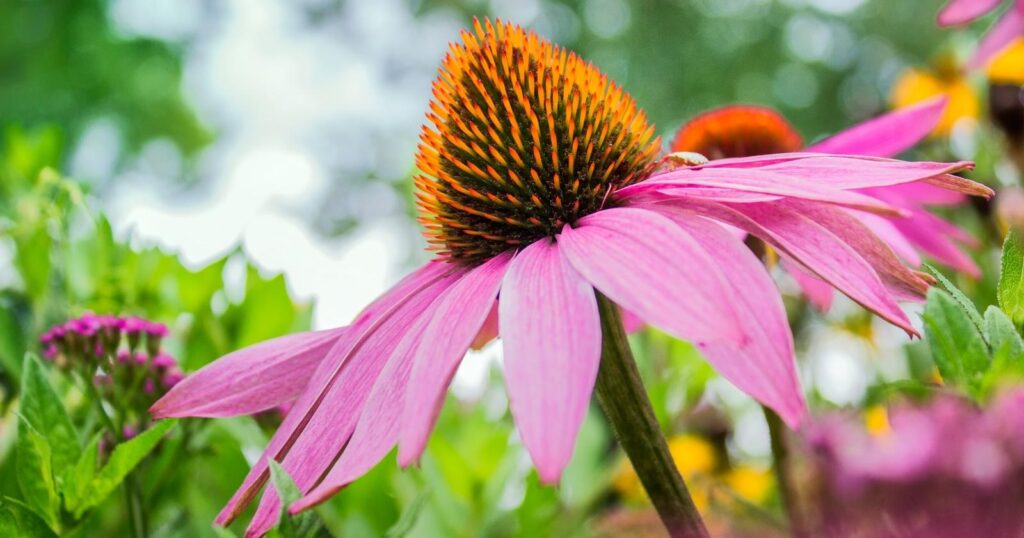
Scientific Name: Echinacea
- Plant Type: Perennial
- Geographic Origin: Pacific Northwestern, Eastern, Midwest
- Plant Size: 1-3 feet tall
- Sun Exposure: full sun
- Plant Zone: 6
The coneflower, or echinacea, is a commonly known plant throughout North America. Native to the Eastern United States, coneflower is famous as a Zone 6 perennial. This plant boasts claims of immune-boosting properties in teas, powders, oils, or other supplements.
Coneflowers sprout and proliferate easily, displaying abundant daisy-like flowers in Zone 6 climates throughout the summer. These flowers are the heavy, multi-petaled type in purples and pinks. Choose locations with full sun, defined as more than six hours daily, for your coneflowers.
This plant is low maintenance, requiring little fertilizer and no need for additional watering than typical Zone 6 conditions. If your coneflowers look a little droopy, prune the flower stem back by about one-third of the plant’s length. This deadheading will quickly restore this perennial.
Coral Bells
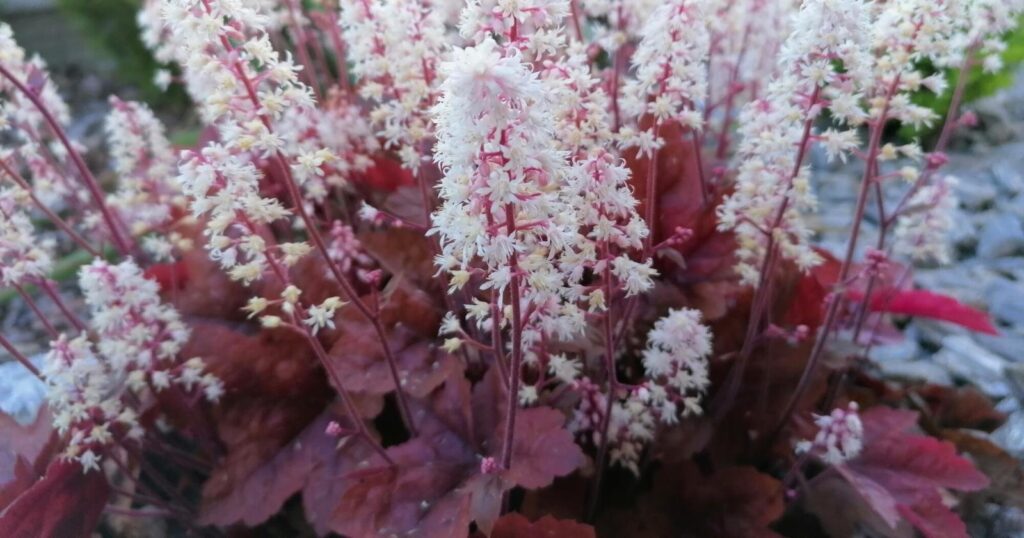
Scientific Name: Heuchera
- Plant Type: Perennial
- Geographic Origin: Pacific Northwestern, Eastern, Midwest
- Plant Size: 12 – 18 inches
- Sun Exposure: Part sun
- Plant Zone: 6
Evergreen and hardy in Zone 6, coral bells are a spectacular plant for transition spaces between groomed and natural gardens. Coral bells bloom in late spring to early summer, showing off impressive spikes of tall blooms. Its bell-shaped flowers can be white, light coral, or dark red.
Because coral bells thrive in natural woodland areas, it is essential to replicate this atmosphere in the space you plant your coral bells. Consider a garden bed enriched with compost or organic matter, as you would find on the forest floor. Choose a shady space or filtered sunshine only.
Daisy
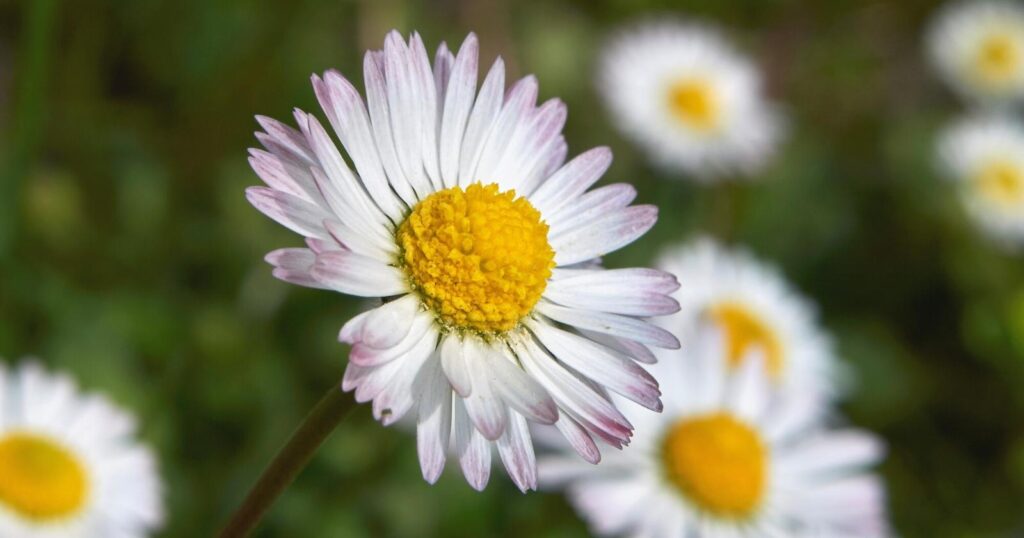
Scientific Name: Bellis perennis
- Plant Type: Perennial
- Geographic Origin: Pacific Northwestern, Eastern, Midwest
- Plant Size: 12 – 18 inches
- Sun Exposure: Part sun
- Plant Zone: 6
There are few flowers as iconic as the innocent daisy, the international symbol of loyalty within the language of flowers. Daisies feature a large, round head with multiple petals attached to a round center. White daisies are most common, but daisies can be many vibrant colors.
Plant daisies in shady conditions, not full sun. A well-drained spot will assist your patch of daisies, as will deadheading your flowers consistently. Daisies last as a Zone 6 perennial for only a few years. Plant daisies in a yearly planting schedule, so your gardens are never patchy.
Daylily
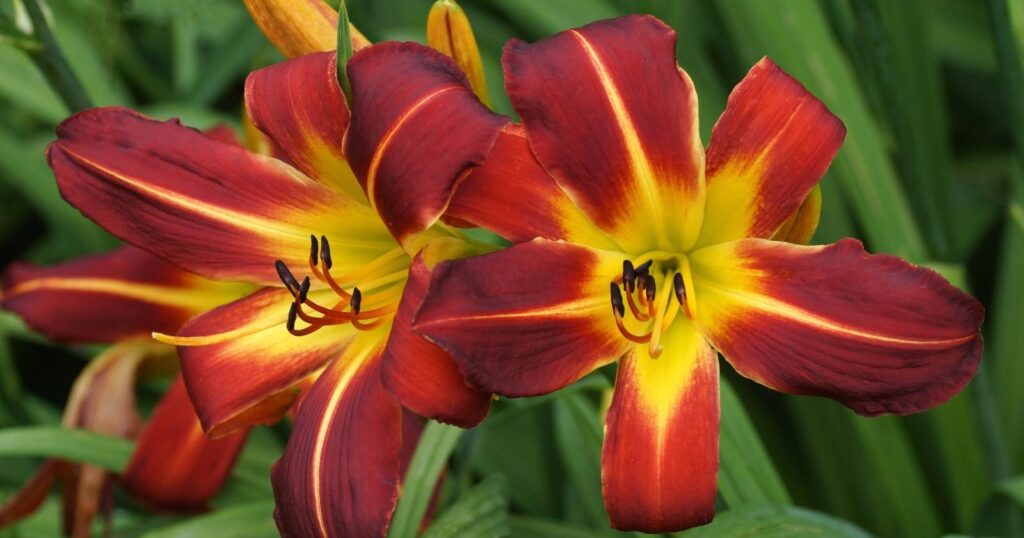
Scientific Name: Hemerocallis
- Plant Type: Perennial
- Geographic Origin: Pacific Northwestern, Eastern, Midwest
- Plant Size: 1 – 3 feet tall
- Sun Exposure: Part sun to full sun
- Plant Zone: 6
If you are looking for the ultimate “bang for your buck” Zone 6 perennial, the daylily fits the bill. Daylilies are characterized primarily by their vibrant flowers, lasting only one day. Daylilies are ancient, amassing more than 35,000 hybrid selections since their Asian and European origins.
Traditional daylily varieties die back and regrow with the change of seasons. However, new kinds exist to provide evergreen foliage. These prolific flowers can be orange, yellow, white, or red and are fragrant, pollen-heavy flowers with pointed, splaying petals.
Goldenrod
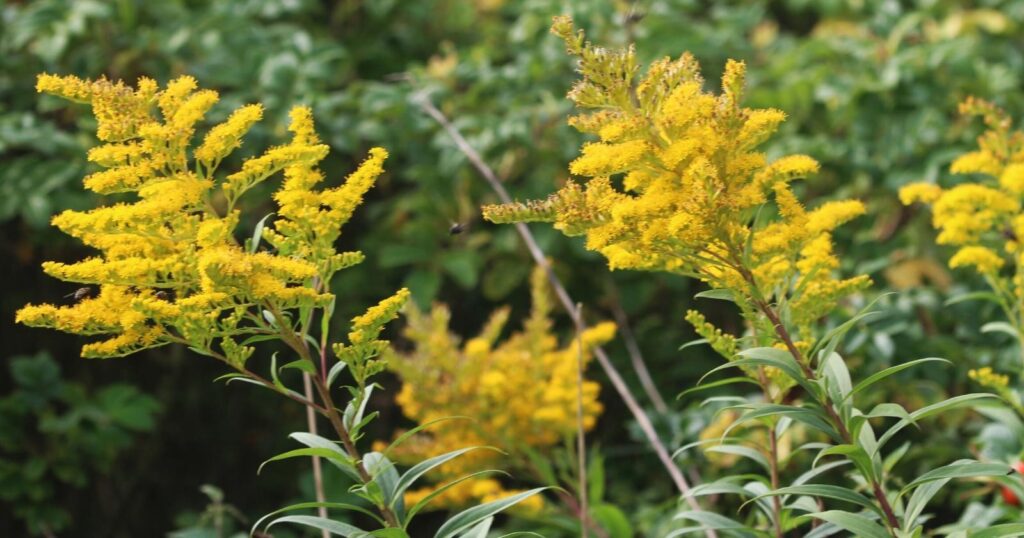
Scientific Name: Solidago
- Plant Type: Perennial
- Geographic Origin: Pacific Northwestern, Eastern, Midwest
- Plant Size: 1 -3 feet tall
- Sun Exposure: Part sun to full sun
- Plant Zone: 6
If you are looking for a plant to provide a texture or color statement, goldenrod should be at the top of your list. Don’t worry about goldenrod giving you hay fever or other allergies. That is primarily an urban myth. Goldenrod blooms scores of vibrant yellow in late summer and early fall.
This Zone 6 perennial is another plant native to North America. This plant thrives in many growing conditions and grows wild throughout the Midwest and other Zone 6 locations. This edible plant likes drier conditions and grows easily in prairies and open areas.
Helenium
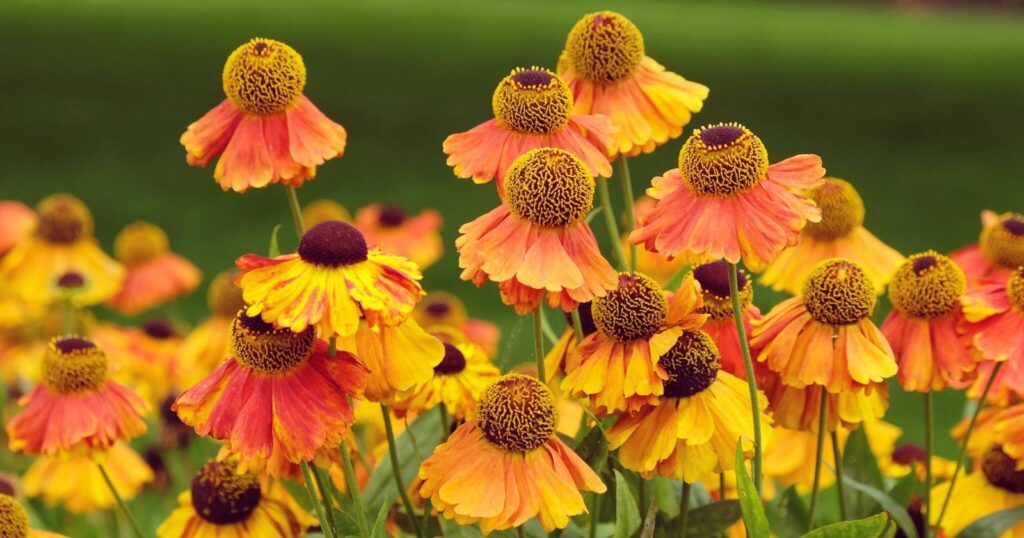
Scientific Name: Helenium
- Plant Type: Perennial
- Geographic Origin: Pacific Northwestern, Eastern, Midwest
- Plant Size: up to 4 feet tall
- Sun Exposure: Part sun to full sun
- Plant Zone: 6
Helenium’s best quality is its long-lasting flowers. If you are looking for plants that will bloom well into the fall, choose one of the many varieties of helenium. These flowers come in many fall-friendly colors, like mahogany, red, yellow, or orange.
This flower is a member of the aster family, another Zone 6 perennial plant. Helenium is also deer-resistant. You’ll want to know the funny alternate name for helenium – sneezeweed! This flower can grow to four feet tall if you experience consistent summer rain.
Hellebore
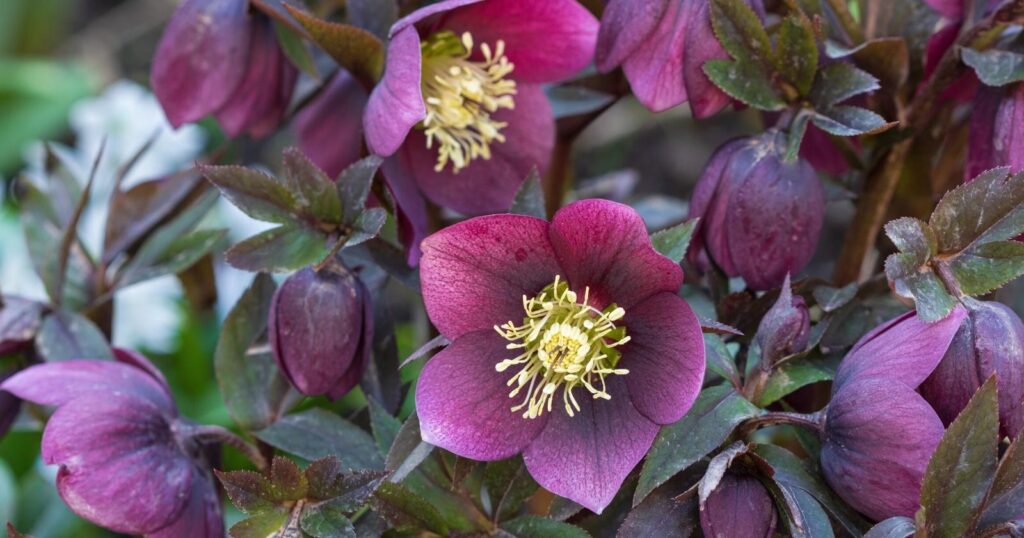
Scientific Name: Helleborus
- Plant Type: Perennial
- Geographic Origin: Pacific Northwestern, Eastern, Midwest
- Plant Size: 3-6 feet tall
- Sun Exposure: Part sun
- Plant Zone: 6
Look no further than hellebore if you’re looking for a traditional plant to impart a cottage feel to your garden. These delicate flowers appear in late winter and early spring as one of the first-blooming Zone 6 perennials to welcome the change in seasons.
This plant desires a woodland garden or another spot with filtered, shaded light. Make sure you leave room for this plant to grow, as the hellebore will expand and return for many years. Be patient – it may take a few years for the first blooms to arrive.
Hosta
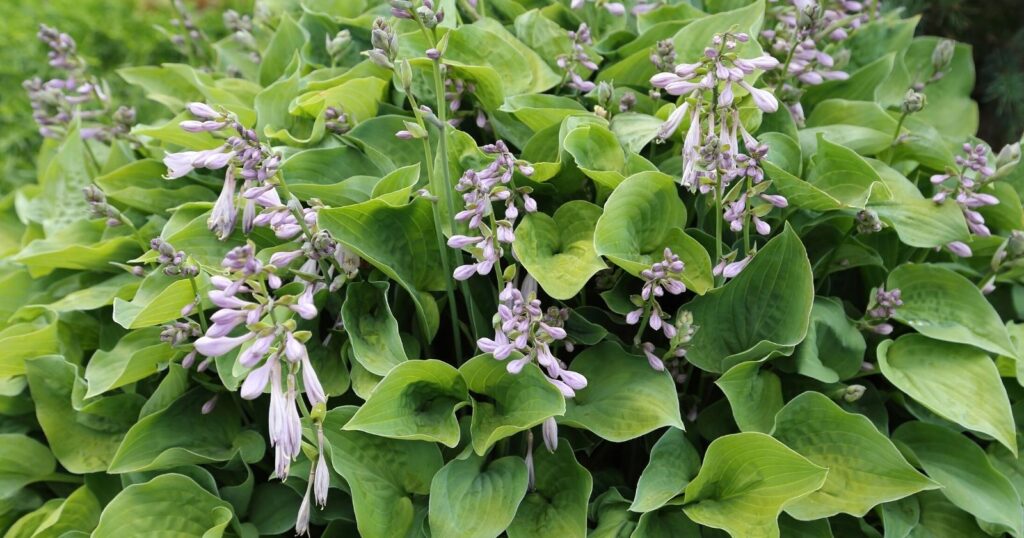
Scientific Name: Hosta
- Plant Type: Perennial
- Geographic Origin: Pacific Northwestern, Eastern, Midwest
- Plant Size: 12 – 18 inches
- Sun Exposure: Part sun to full sun
- Plant Zone: 6
Another addition to the Zone 6 perennials that love the shade is super easy to grow and provides years of visual interest. The hosta plant is a genuinely fantastic variety.
A good reminder for growing hostas is that the lighter the plant’s greenery, the more sunshine it needs. Dark green hostas can thrive in very shady areas, while bright, almost neon green varieties of hostas need more sunlight.
Hostas will bloom in the summer, reaching a long strand of drooping purple or white flowers into the air. Hostas are rugged and can tolerate most soil conditions before starting to spread horizontally quickly.
Hydrangea
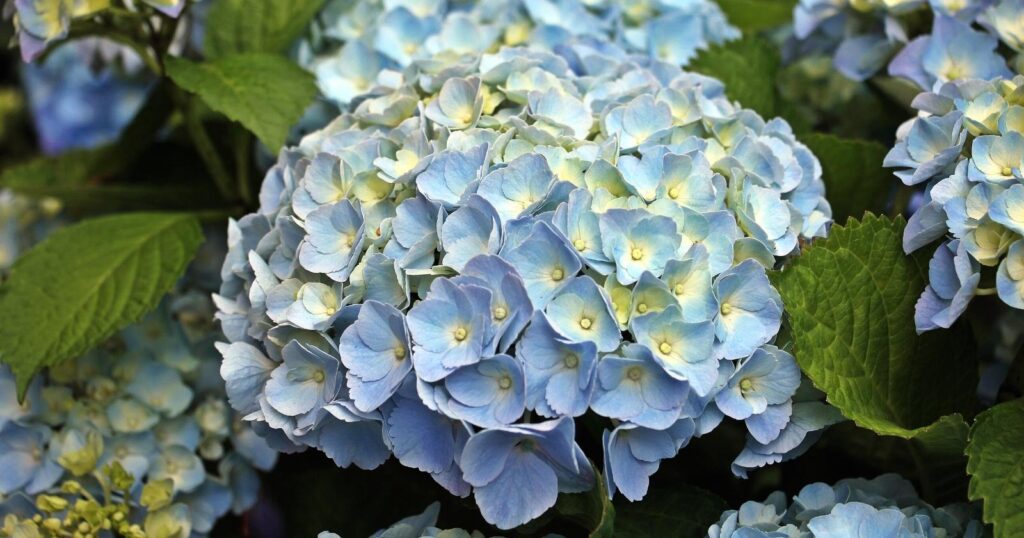
Scientific Name: Hydrangea
- Plant Type: Perennial
- Geographic Origin: Pacific Northwestern, Eastern, Midwest
- Plant Size: 3 – 8 feet tall
- Sun Exposure: Part sun to full sun
- Plant Zone: 6
Another cottage garden classic, hydrangeas, is a thrilling Zone 6 perennial. This plant can be grown into a tall tree, small shrub, or hedge shape. This versatile perennial appreciates full sun or partial shade and moist, well-drained soil. An afternoon break from sunshine is needed.
Hydrangea plants produce enormous, ice cream cone-shaped flowers in white, blue, pink, or green. The soil’s acidity determines the color of your hydrangeas, so you can manipulate yours to achieve a new color. Hydrangeas are hardy in all weather and pest-resistant.
Watering is most important in hydrangea care. Be sure to monitor the water levels of your plant and keep everything moist. Hydrangeas do not like extended periods of very hot or dry weather.
Forsythia
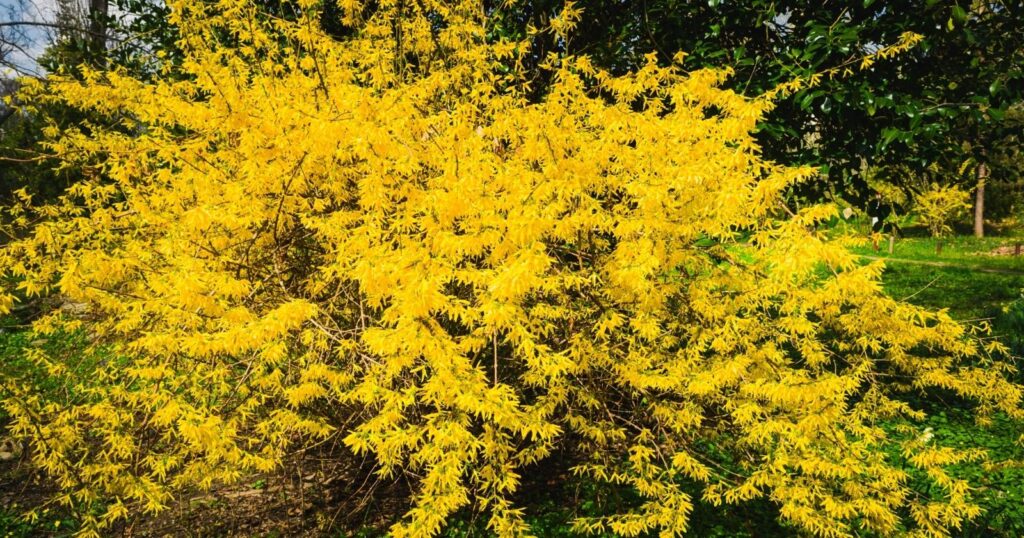
Scientific Name: Forsythia
- Plant Type: Perennial
- Geographic Origin: Pacific Northwestern, Eastern, Midwest
- Plant Size: 8 – 10 inches tall
- Sun Exposure: Full sun
- Plant Zone: 6
Consider planting a forsythia bush if you have a full sunspot that needs early spring drama. At least six hours of consistent sun is required for this bush. This plant thrives with two inches of water each week, although it can tolerate periods of mild drought.
Forsythia produces strands of small, yellow flowers that burst from each branch. This bush is one of the first Zone 6 perennials to bloom in the spring, so plant this variety for a burst of cheer during the dreariness of February and March.
Leadwort
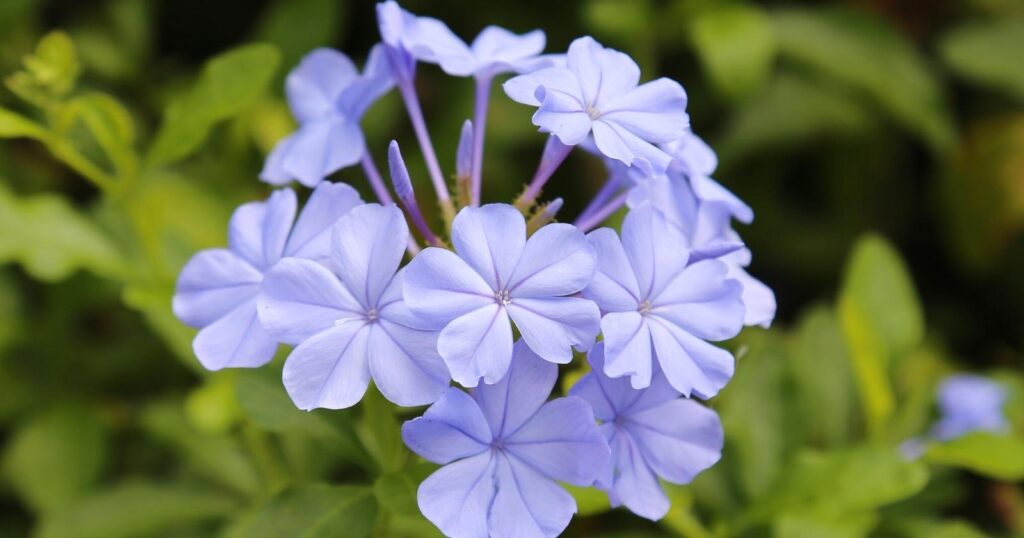
Scientific Name: Plumbago
- Plant Type: Perennial
- Geographic Origin: Pacific Northwestern, Eastern, Midwest
- Plant Size: 6 inches – 3 feet
- Sun Exposure: Full sun
- Plant Zone: 6
If light blue is a fall color that appeals to you more than the typical palette of reds, oranges, and yellows, leadwort is the plant for you. These small, flat flowers resemble lilac flowers and grow in clumps.
Leadwort grows best in well-drained soils in dry, sunny areas. Choose leadwort as a cheerful groundcover option. This plant grows from only six inches up to three feet in height, making it a versatile choice for many landscaping solutions.
Little Bluestem
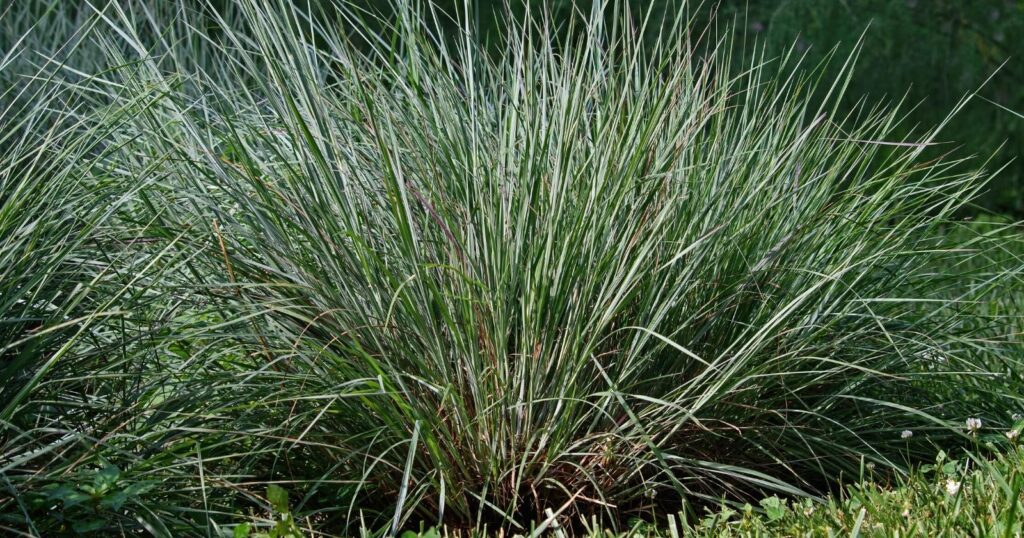
Scientific Name: Schizachyrium scoparium
- Plant Type: Perennial
- Geographic Origin: Pacific Northwestern, Eastern, Midwest
- Plant Size: 1-3 feet tall
- Sun Exposure: Part sun to full sun
- Plant Zone: 6
This ornamental grass is a great companion plant to bee balm and stands out in sunny landscape gardens. This plant grows its spiky leaves from one to three feet tall, providing three-season vertical interest. Little bluestem turns a lovely mahogany color in the fall.
Little bluestem is another Zone 6 perennial native to North America. Native plants are naturally and effortlessly more successful in their location of origin because they have evolved to live in that precise environment. Like other native plants, little bluestem is disease- and pest-resistant.
Orange Rocket Barberry
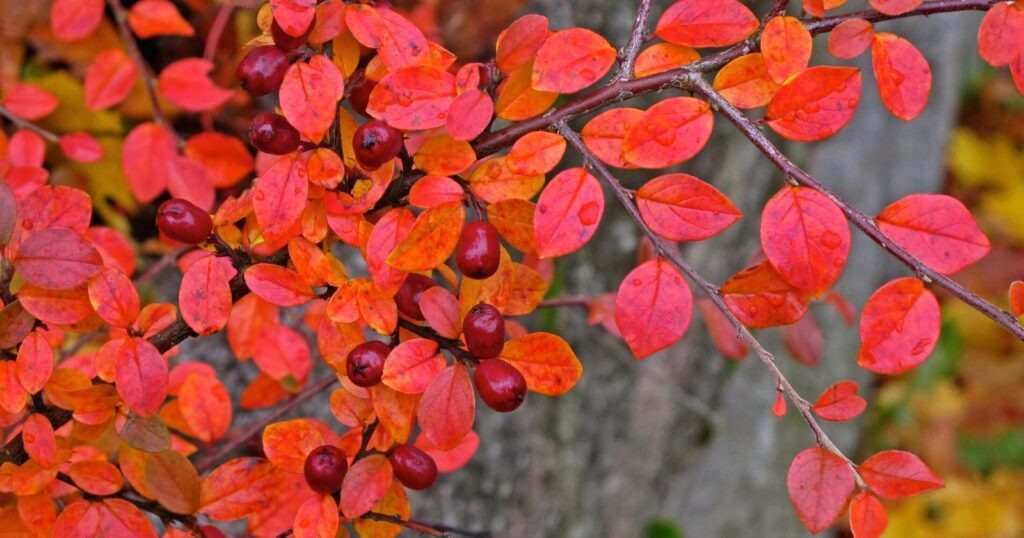
Scientific Name: Berberis thunbergii
- Plant Type: Perennial
- Geographic Origin: Pacific Northwestern, Eastern, Midwest
- Plant Size: up to 4 feet
- Sun Exposure: Part sun to full sun
- Plant Zone: 6
This plant is another year-round interest variety, as this upright shrub commands attention for its size and color. Orange Rocket Barberry tolerates part shade or full sun and is generally considered an easy-care plant.
This shrub grows as tall as four feet and one and a half feet wide. As spring foliage returns, it immediately emerges a beautiful coral color. As the seasons pass, the Orange Rocket Barberry deepens to show-stopping ruby-red foliage during the fall.
Peony
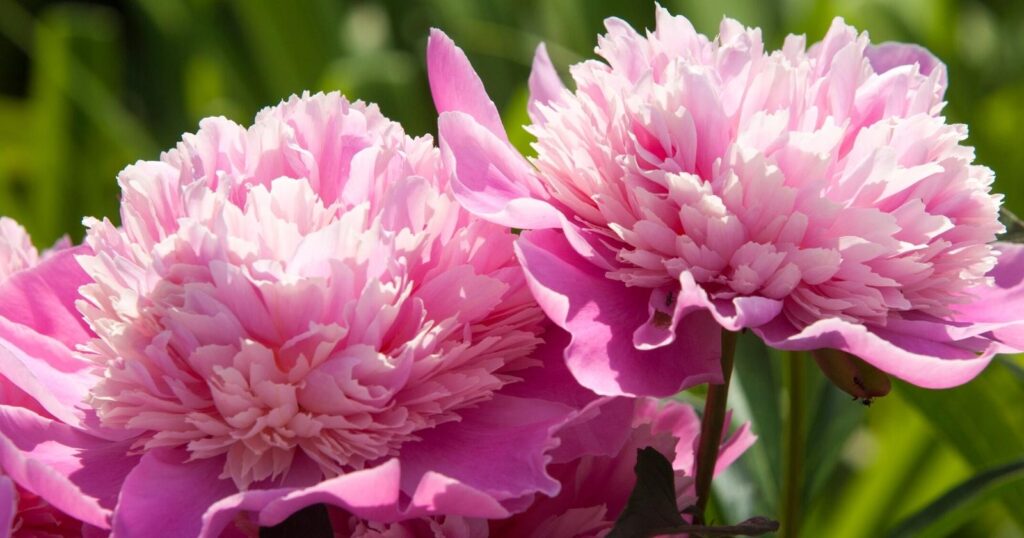
Scientific Name: Paeonia
- Plant Type: Perennial
- Geographic Origin: Pacific Northwestern, Eastern, Midwest
- Plant Size:1 – 3 feet tall
- Sun Exposure: Full sun
- Plant Zone: 6
The peony is an iconic Zone 6 perennial flower known for its enormous, globe-shaped blooms. The peony drinks in a full sun environment with well-drained soil. This flower grows from a small, rounded bush with glossy foliage.
If you decide to grow a peony, keep in mind that peony flowers will become covered in ants. The ants do not hurt the flower and instead are just enjoying the flower’s sticky nectar.
Remember to dip the blooms in warm tap water when you bring the flowers inside to sweep the ants away. This water bath will encourage the flower to open up as a bonus.
Peonies are large and fragrant flowers that emerge in late spring or early summer. These flowers have an abundant interior of many delicate, slowly unfolding petals and come in white, pink, or magenta. Although the blooms look high maintenance, peony care is very accessible.
Poppy
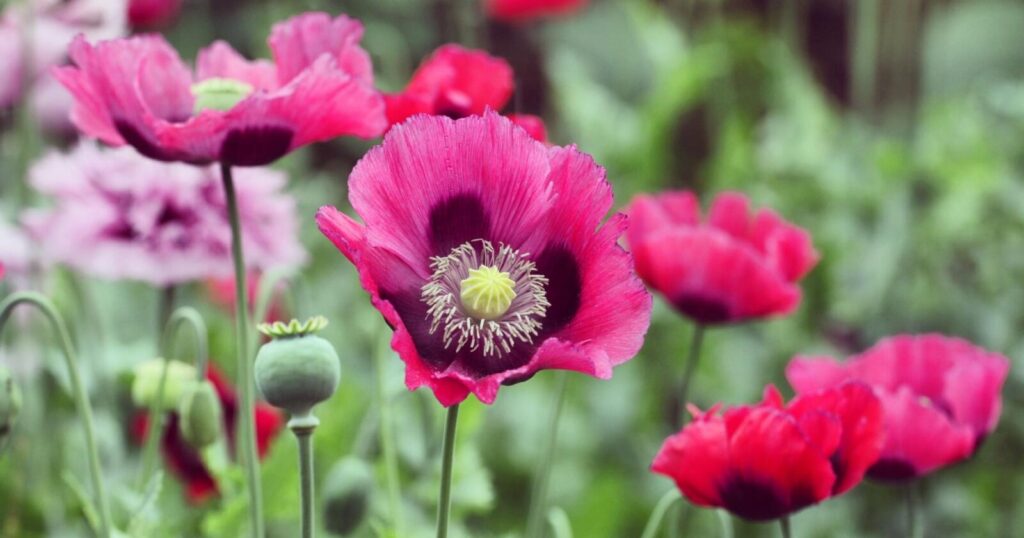
Scientific Name: Papaver
- Plant Type: Perennial
- Geographic Origin: Pacific Northwestern, Eastern, Midwest
- Plant Size: 12 – 18 inches tall
- Sun Exposure: Part sun to full sun
- Plant Zone: 6
One way to imagine Zone 6 perennials is through California’s state flower: the poppy. Poppies grow abundantly in sunny California but are hardy through many zones throughout the United States. This flower is so abundant, it is also used as a symbol of remembrance of World War I.
The poppy extends the long neck of its stem considerably above its ground foliage to reveal a delicate, phyllo-dough thin, flower saucer. This flower is relatively large, with a strong, dark center to pair with its wavy, open petal. Poppies can be red, purple, orange, yellow, and more.
Potentilla
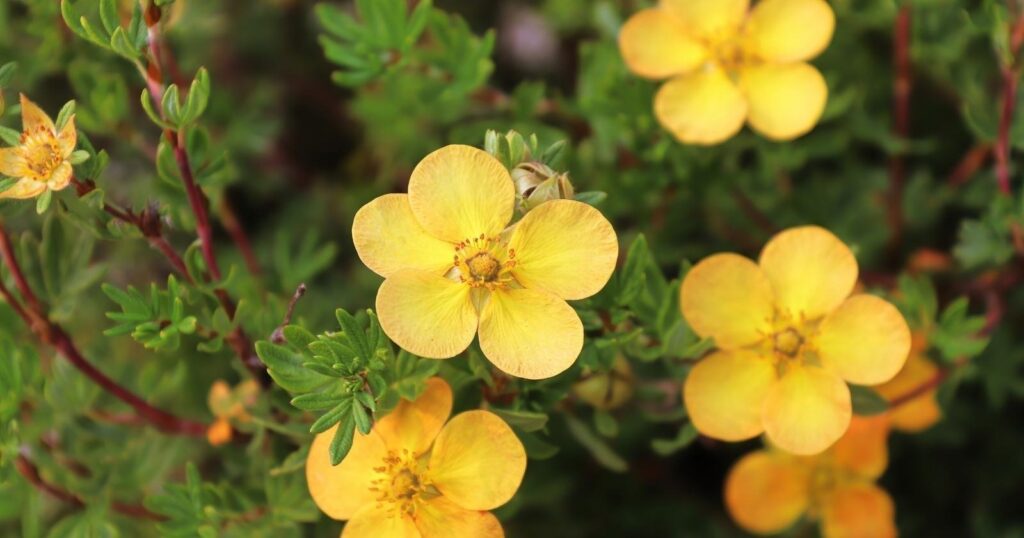
Scientific Name: Potentilla
- Plant Type: Perennial
- Geographic Origin: Pacific Northwestern, Eastern, Midwest
- Plant Size: 1 – 3 feet tall
- Sun Exposure: Part sun to full sun
- Plant Zone: 6
Sloping areas of Nashville, Santa Fe, or Salt Lake City should explore potentilla, a Zone 6 perennial that acts as a very effective groundcover. Potentilla thrives in rock gardens and other environments that may not be hospitable for many other types of plants.
Potentilla’s primarily yellow, but possibly pink, white, or orange, flowers bloom during the heights of summer, from June through August. However the visual interest for this plant does not stop there. This shrubby plant offers peeling bark with a reddish hue to add winter excitement.
Rose
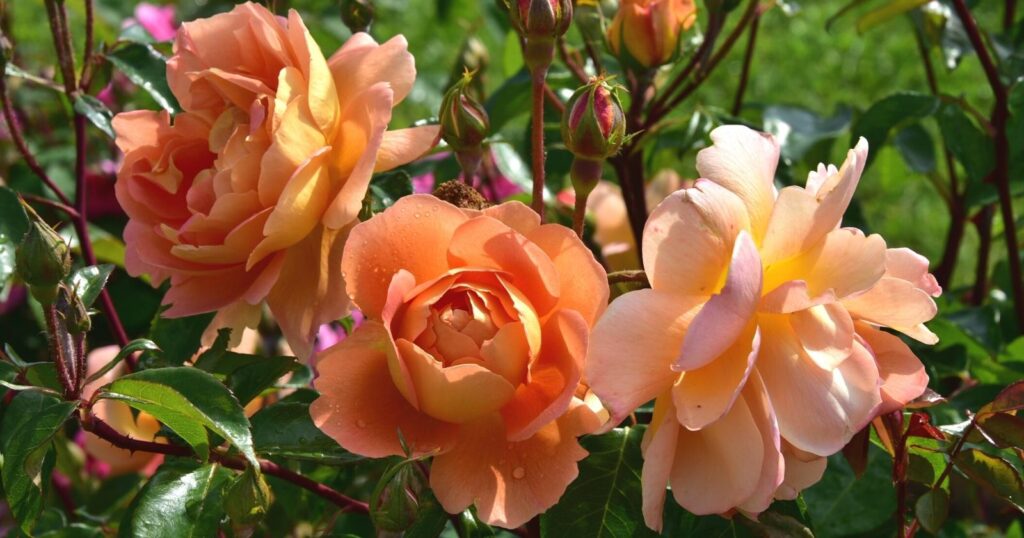
Scientific Name: Rosa
- Plant Type: Perennial
- Geographic Origin: Pacific Northwestern, Eastern, Midwest
- Plant Size: 1 – 3 feet tall
- Sun Exposure: Part sun to full sun
- Plant Zone: 6
Definitely the most iconic plant on this list, the rose is hardy to Zone 6. Roses can be grown as a bush or small tree and are covered in prickly thorns. This flower is notorious for its high maintenance needs, which include special fertilizer and pruning.
The signature aspect of roses is their enchanting smell, along with their beauty. This flower comes in a variety of amazing colors, from the classic red to an entire range of pinks and even the modern rainbow.
There are many varying sizes and shapes of roses for every need. Miniature roses offer an adorable and innocent touch while dramatic, endlessly-layered David Austin roses will steal the show in any garden.
Salvia
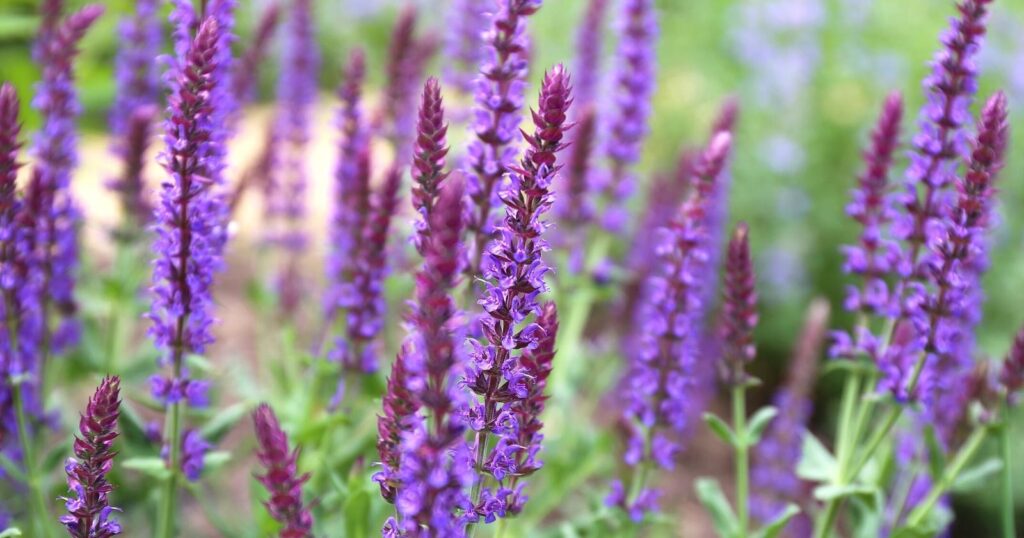
Scientific Name: Salvia
- Plant Type: Perennial
- Geographic Origin: Pacific Northwestern, Eastern, Midwest
- Plant Size: 1- 3 feet tall
- Sun Exposure: Part sun to full sun
- Plant Zone: 6
The hardy shrub version of the culinary herb sage, salvia, is another easy-to-grow perennial that is a Zone 6 perennial. Salvia is a member of the mint family, so this plant is rugged and will tolerate many different growing conditions. Summer heat and mild drought are ok with salvia.
Salvia is a quickly-growing plant that will grow back year after year. This plant easily attracts butterflies and other beneficial pollinators. Salvia flowers range from common purple spikes to pinks, blues, yellows, and even white.
Switchgrass
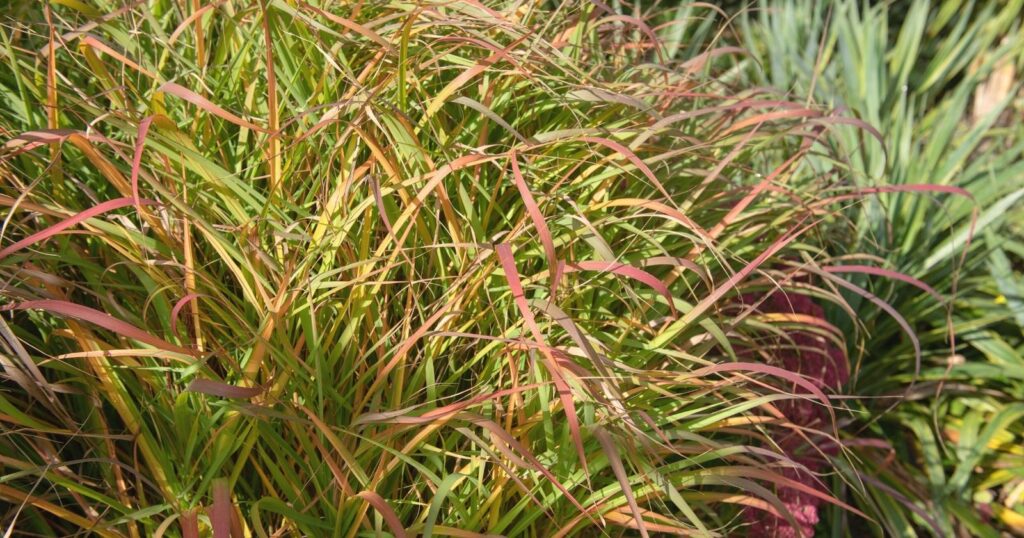
Scientific Name: Panicum virgatum
- Plant Type: Perennial
- Geographic Origin: Pacific Northwestern, Eastern, Midwest
- Plant Size: 3-6 feet tall
- Sun Exposure: Part sun to full sun
- Plant Zone: 6
For the second ornamental grass on our list, switchgrass offers a fountain of visual interest. This rugged plant can grow in sandy, loamy, or clay soils and is tolerant of periods of drought.
Ornamental grasses are an excellent addition to any balanced landscape design. These grasses provide vertical interest within a garden to fill any gaping holes. These grasses’ delicate and thin shape offers feathery lightness for landscapes dominated by heavy shrubs or trees.
This tall plant grows in long, flat, blue-green spikes. As the season wears on, one side of the switchgrass turns a mahogany color. The effect is magical when this elegant grass waves in the fall breeze.
Veronica
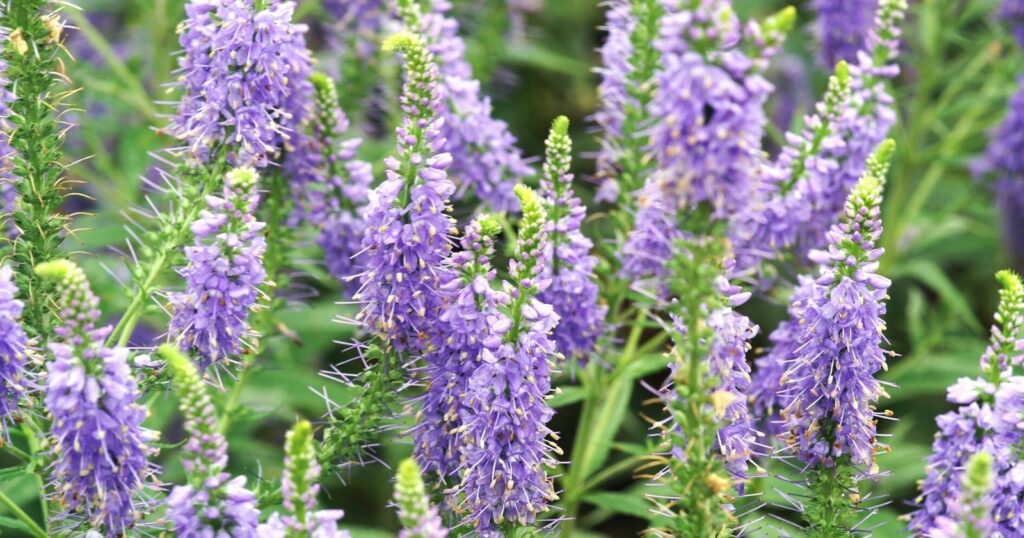
Scientific Name: Veronica
- Plant Type: Perennial
- Geographic Origin: Pacific Northwestern, Eastern, Midwest
- Plant Size: 1-3 feet tall
- Sun Exposure: Full sun
- Plant Zone: 6
This flower, also called “speedwell,” gets that name for its quick, no-nonsense growth pattern. Veronica loves a full sun environment and will live up to its name most if it gets to drink in the sun. However, Veronica will also thrive in part shade.
Consider Veronica the outdoor equivalent of the famous snake plant. Both varieties seem to almost thrive on neglect. Veronica will continue to bloom without giving it any care, so consider this plant if you have a natural garden that you want to grow wild and organically eventually.
Weigela
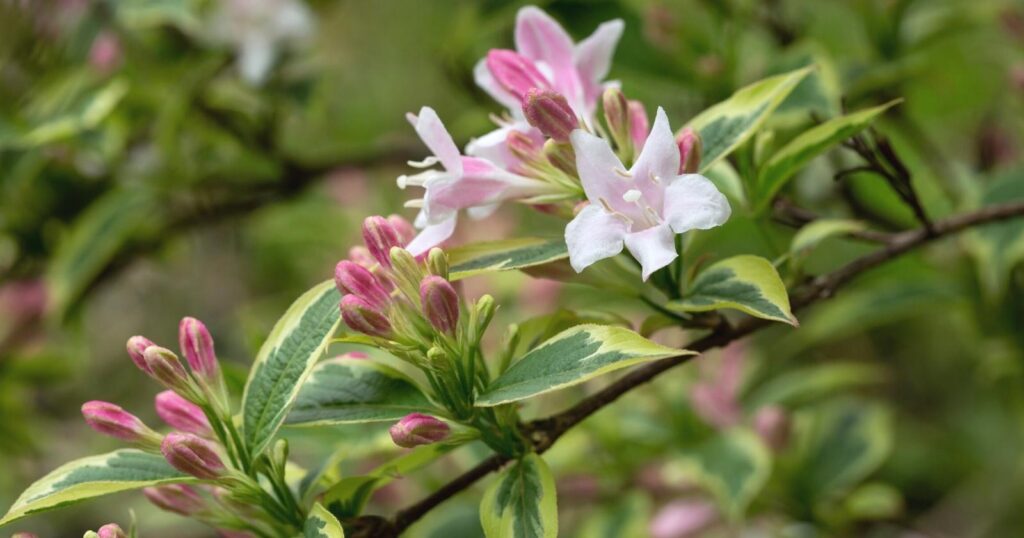
Scientific Name: Weigela florida
- Plant Type: Perennial
- Geographic Origin: Pacific Northwestern, Eastern, Midwest
- Plant Size: 3-6 feet tall
- Sun Exposure: Full sun
- Plant Zone: 6
Enjoy your weigela shrub through all the seasons. This plant attracts hummingbirds with its pretty spring flowers. These small, pink flowers dominate the hedge, which also features beautiful, variegated leaves. Colorful foliage dazzles well into the fall season.
Plant your Weigela florida in a full sun location and soil with good drainage for best results. This shrub can still grow in part shade and heavy clay soil. Weigela will grow to four or five feet tall and is equally successful as a standalone plant or grown in a group as a beautiful hedge.
Yarrow
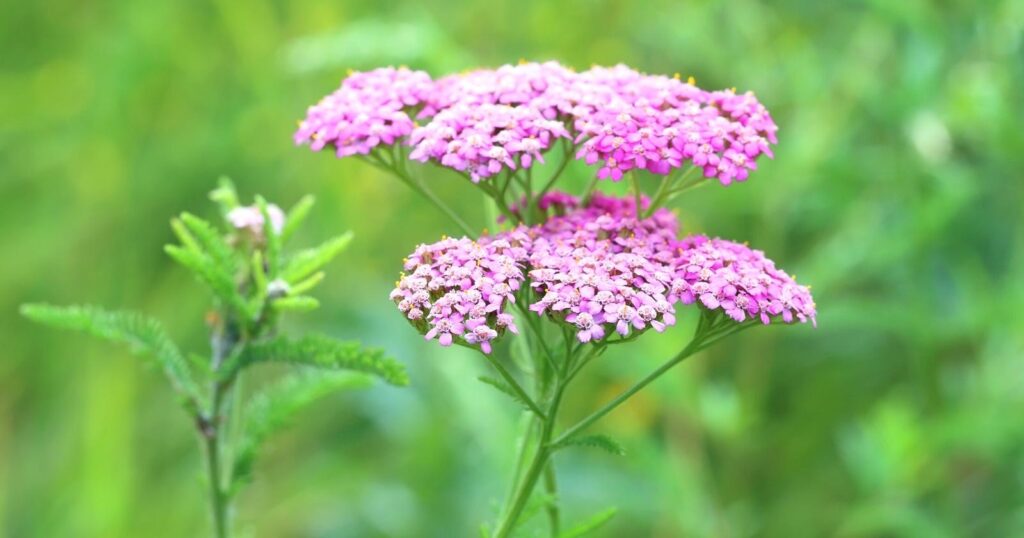
Scientific Name: Achillea millefolium
- Plant Type: Perennial
- Geographic Origin: Pacific Northwestern, Eastern, Midwest
- Plant Size: 2-3 feet tall
- Sun Exposure: Part sun to full sun
- Plant Zone: 6
Another sun-loving plant is yarrow, a tall plant that resembles cauliflower. Yarrow likes soil with good drainage and plenty of hot days. If your soil is heavy clay or consistently damp, yarrow may not be as successful. Yarrow is rabbit- and deer-resistant.
With a similar appearance and growth habit to Queen Anne’s Lace, yarrow can grow well without much maintenance. Yarrow is a classic element in cottagecore and holistic environments, as this flower provides both a soft aesthetic and several medicinal qualities.
Yewtopia Plum Yew
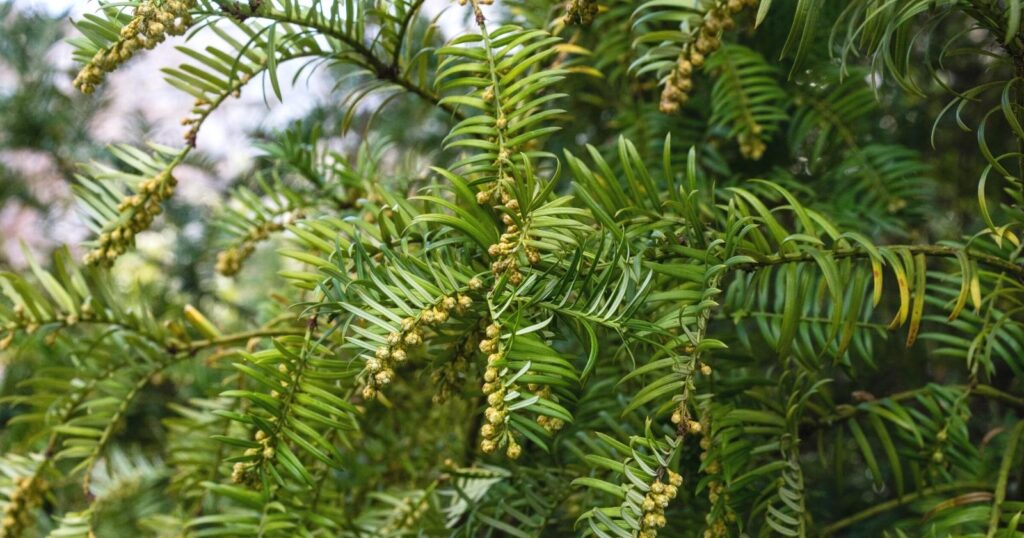
Scientific Name: Cephalotaxus harringtonia
- Plant Type: Perennial
- Geographic Origin: Pacific Northwestern, Eastern, Midwest
- Plant Size: 3-4 feet tall
- Sun Exposure: Part sun
- Plant Zone: 6
Do you have well-drained soil? Do you have a shady spot that needs an ornamental shrub? Are you bored of boxwoods? Try a Yewtopia plum yew tree for a pest-resistant plant with attractive foliage. As a bonus, this variety is wonderfully low-maintenance and tolerates drought.
The Yewtopia Plum Yew grows to three or four feet wide over several years, making pruning unnecessary. This foliage resembles a Christmas tree’s needles more than a typical shrub, making it a point of visual interest throughout the year. This evergreen plant does not flower.
Wrap Up
Zone 6 perennials come in so many different varieties. This North American climate supports various plants, from decorative grasses to shrubs, flowers, and even ornamental onions! Research each type carefully to ensure it will fit within your sun exposure and soil needs.
If you have more questions about Zone 6 perennials or how and when to get started, reach out to your local network of master gardeners. Whether you live in Idaho or Pennsylvania, you can enjoy lovely Zone 6 perennials in your own backyard.


Leave a comment